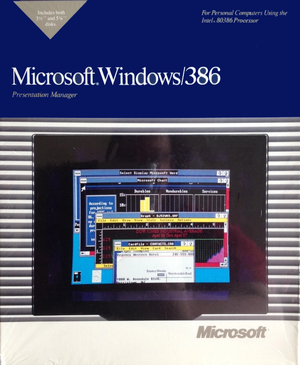Windows 2.0: Difference between revisions
(really fix Tapei link) |
(remove added to museum section for easier maintenance) |
||
| Line 30: | Line 30: | ||
!| Developer | !| Developer | ||
!| Released | !| Released | ||
!| Notes | !| Notes | ||
|- | |- | ||
| Line 36: | Line 35: | ||
| style="border-style: solid; border-width: 1px; text-align:center" | [[Bogus Software]] | | style="border-style: solid; border-width: 1px; text-align:center" | [[Bogus Software]] | ||
| style="border-style: solid; border-width: 1px; text-align:center" | 1987 | | style="border-style: solid; border-width: 1px; text-align:center" | 1987 | ||
| style="border-style: solid; border-width: 1px; text-align:center" | Version 1.02 of a Mahjong Solitaire game for Windows 2.1. | | style="border-style: solid; border-width: 1px; text-align:center" | Version 1.02 of a Mahjong Solitaire game for Windows 2.1. | ||
|} | |} | ||
Latest revision as of 01:57, 28 January 2024

| |
| Windows 2.x | |
| Developer | Microsoft |
|---|---|
| Publisher | Microsoft |
| Platforms | x86 |
| Released | 2.0: September 7, 1987 2.01: September 23, 1987 2.02: September 14, 1987 2.03: December 9, 1987 2.1: May 27, 1988 2.11: March 14, 1989 |
| Added to Museum |
Not yet |
Windows 2.0 is the second iteration of the Windows product line by Microsoft.
Like its predecessor, Windows 2.0 was a mouse-controlled graphic user interface rather than an operating system.
New features
Windows 2.0 added overlapping windows, more keyboard shortcuts, and a control panel.
Versions
Windows 2.0, 2.01, 2.02, 2.03, 2.1, and 2.11 were restricted to the 16-bit architecture of DOS as they relied on the DOS operating system for essential functions.
2.1 and 2.11 were split into 286 and 386 versions and required a hard drive. Windows/286 included a himem.sys file that allowed access to the high memory area freeing up conventional memory. Windows/386 also had himem.sys, and used the virtual 8086 mode of the 80386 to allow for multi-tasking of DOS applications.
Windows/386 2.1 and 2.11 ran DOS programs through a DOS-based Virtual DOS Machine.
Compatibility
Applications created with these versions were compatible with Windows 1 but weren't compatible with Windows 3 and higher operating systems due to the lack of protected mode.
Digital 16-bit Windows 2.x games owned by WEC Museum
| Title | Developer | Released | Notes |
|---|---|---|---|
| Tapei! | Bogus Software | 1987 | Version 1.02 of a Mahjong Solitaire game for Windows 2.1. |